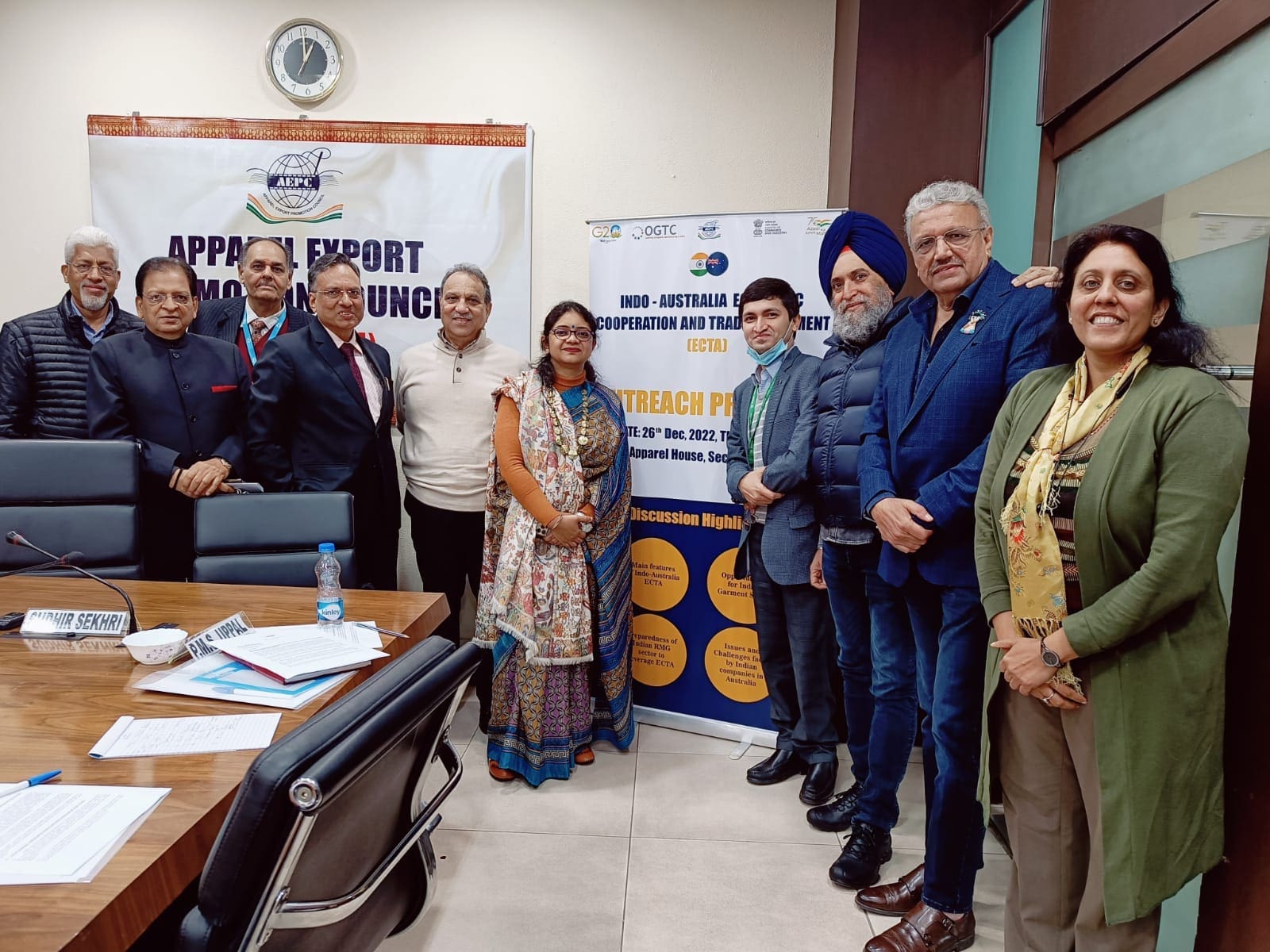– Apparel Exports to Australia to grow three times by 2025: AEPC Vice – Chairman
New Delhi/ Gurugram: An outreach programme with apparel exporters was organized by the Department of Commerce (DOC) in association with AEPC at Apparel House Gurugram today. This was the first outreach programme on Indo- Australia Economic Co- operation and Trade Agreement (ECTA) where government and exporters exchanged their views to harness the best potential of the ECTA deal. The prominent members of garment trade including members from OGTC, GEMA, ATDC, etc. were present in the meeting.
Ms. Parul Singh, Deputy Secretary in the Department of Commerce, made a presentation on Indo- Australia ECTA which highlighted the benefits of the deal for the Apparel Industry. Delivering her presentation Ms. Singh Said, “This FTA is a path breaking initiative of the government to promote exports. This deal is likely to benefit various labor-intensive sectors which are subjected to 5% import duty by Australia currently. This deal will provide immediate market access at zero duty accounting 98.3% of tariff lines accounting for 96.4% of India’s exports in value terms to Australia and remaining 1.7% lines over 5 years. Overall, Australia is offering duty elimination on 100% of its tariff line which will ensure duty free access covers all labor-intensive sectors, such as textiles and Apparel.”
Highlighting the benefits for the Apparel Sector, Ms. Singh stated, “India’s 70% of textile products and 90% of apparel products face a 5% tariff on export to Australia vis-à-vis competitors such as China, Vietnam and Bangladesh which have zero duty access. With the elimination of duty, India’s exports of textiles and apparels are expected to gain from US$ 0.5 billion to US$ 1.1 billion in the next 3 years. Further, additional capacity creation due to exports and re-investment, is likely to create additional employment of 40,000 persons per annum.” This ECTA has a higher value addition of 35% for specifying country of origin, which has been deliberately kept to avoid the leakages from other countries. We are now going to work for board-based CECA building upon the ECTA deal which will make it comprehensive, she added.
Delivering the special address Shri Sudhir Sekhri, Vice Chairman AEPC said, “Australia is the largest importer of garments in the Southern Hemisphere. While China’s share of import of apparel into Australia is more than 70%, India’s share in imports is less than 5%. With the India-Australia ECTA getting operationalized, India will have a slight duty advantage over Vietnam and Indonesia for imports in the Australian market”. India’s RMG exports to Australia have seen a growth of an average of 11.84% over the last 5 years, which is purely on account of China Plus One strategy adopted by most countries. Going by this growth trend and with the ECTA coming into play, AEPC believes that India’s RMG exports to Australia would grow three times by 2025, Vice Chairman AEPC added.

Shri Sekhri noted that as MOQ is small for Australia it will provide a big opportunity for even smaller and medium size exporters to supply Indian products.
Shri P M S Uppal, President OGTC in his address said, “Time has come for us to ask the top ten Australian importers what they actually need, as most of the fabrics are not available in India. A lot of study needs to be done and government and trade would need to walk hand in hand.” He said most of the big Australian companies have deep roots in China. They will only be considering India as an option if we give them lucrative incentives and reasons to shift to India for sourcing their requirements.
AEPC Senior EC members along with other small and medium exporters raised the issue of direct shipping lines with FTA countries and faster clearance at the customs. Members suggested ways how the fabrics imports can be easily facilitated without going for an advance authorization scheme and suggested ways for faster clearances at the ports. ATDC also offered to collaborate with the Australian design and fashion agencies and institutions and is ready to provide its design and training facilities to help the industry.
The other concerns and challenges raised by the exporters during the meeting included; smaller MOQs, availability of fabrics, simplification of procedures and timely facilitation at the ports, direct shipping lines with countries having FTA, design and fashion mapping, faster adjudication process, skill mapping, etc.
The government has assured AEPC to look into the challenges and respond positively. The meeting ended with the vote of thanks by Dr. L B Singhal, Secretary General AEPC.

